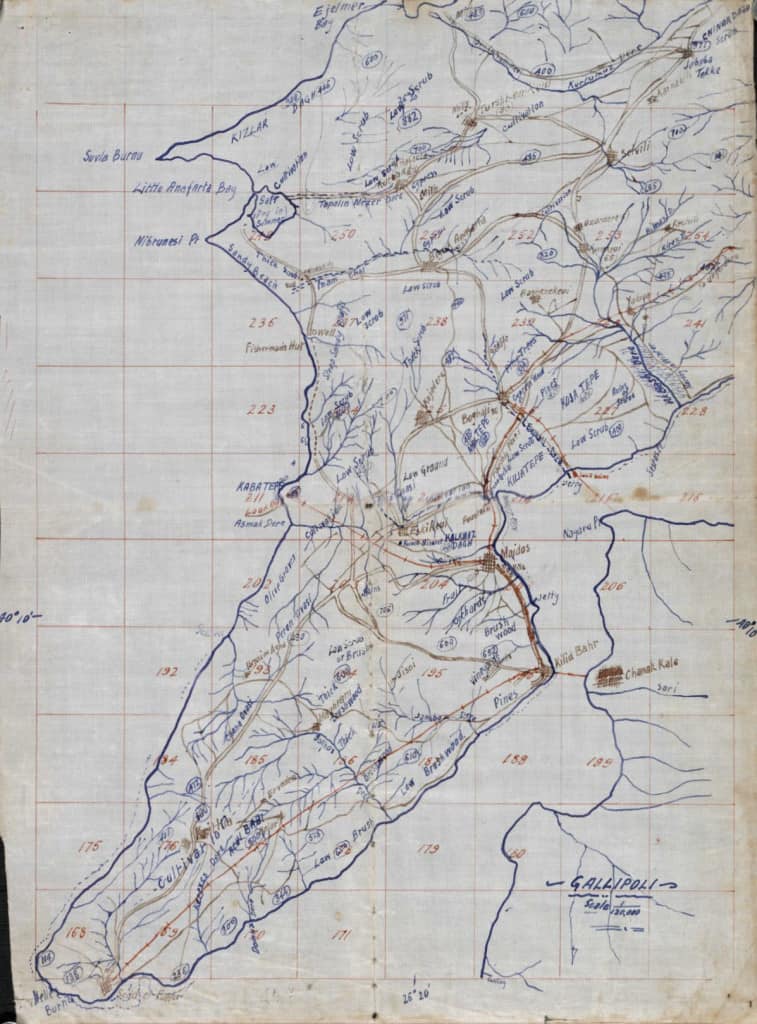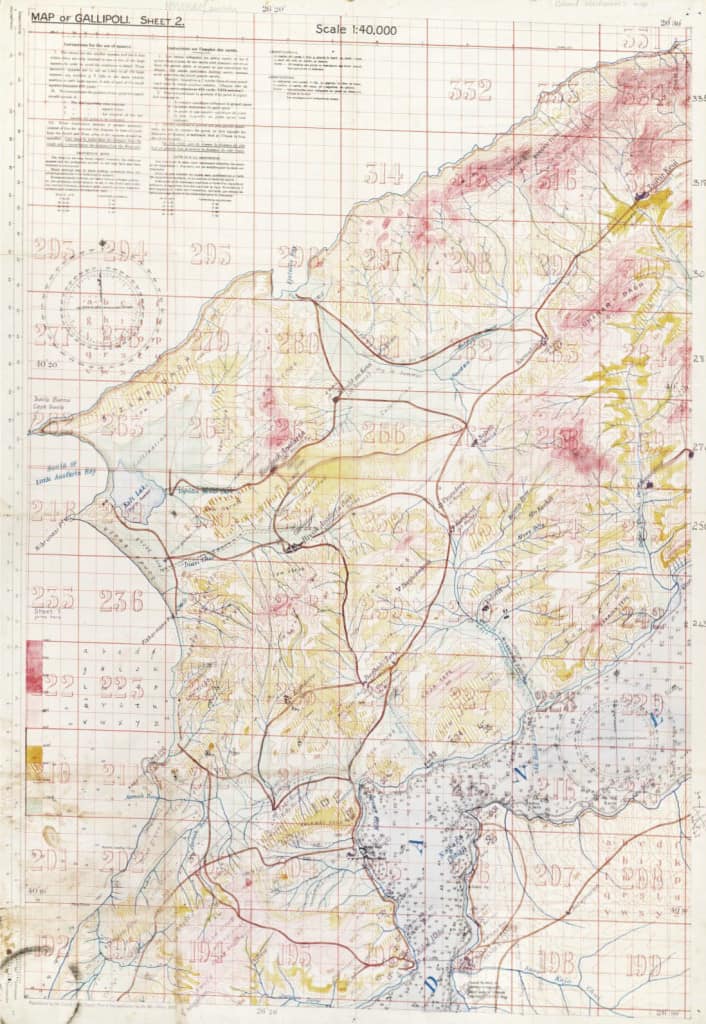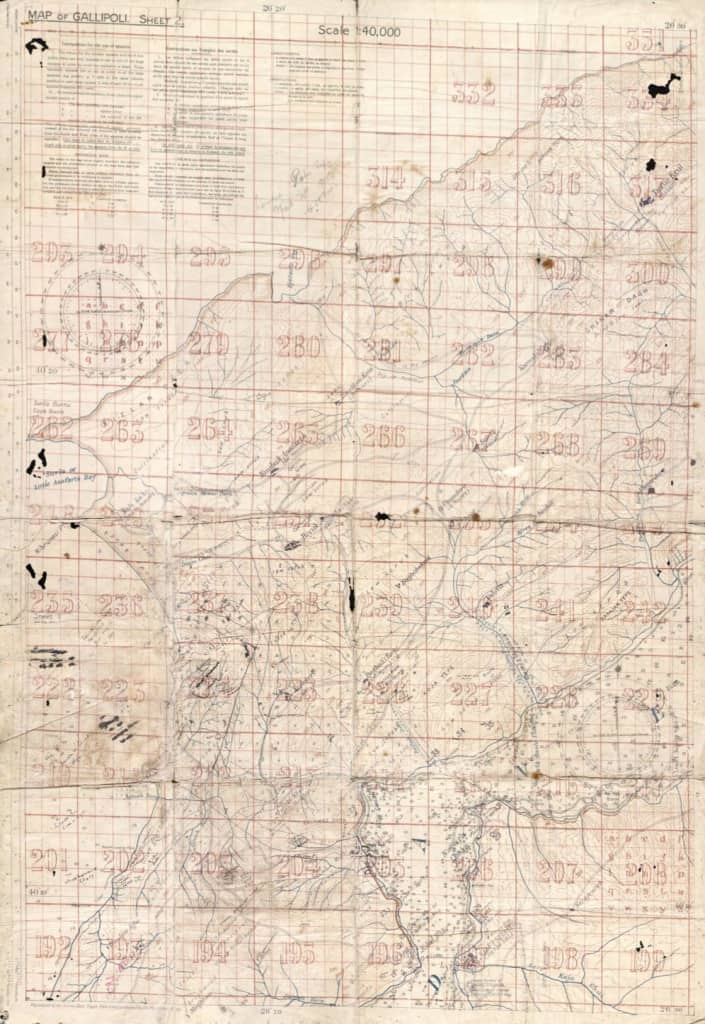Doherty Smith & Associates is now Compass Consulting Surveyors
Click here to see this blog and more on our new website compasscs.com.au
When planning the Gallipoli campaign, the staff of Sir Ian Hamilton used a map scaled from a French map dated 1854, supplemented by information obtained by aerial reconnaissance. In the ten days leading up the 25th of April, flights over the area were performed to correct errors and update the Turkish positions and defences.
The Australian War Memorial website has an exhibition of Gallipoli maps, some of which are available for viewing online. http://www.awm.gov.au/exhibitions/gmaps/
During the landing, the scaled maps which had been prepared were found to be inadequate, with major flaws in showing the terrain and positions of landmarks. Many of the heights shown on the maps were wildly inaccurate. Although these maps proved to be inaccurate, they were used for months after the landing until more accurate versions could be produced.
Maps which were issued to troops and officers for the ANZAC landing were often added to and corrected. The Australian War Memorial holds some outstanding examples of landing maps including the Callaghan, Maclaurin and Leane maps.
The Australian War Memorial site lists Callaghan as a member of the 2nd Field Company Engineers. Callaghan drew a small sketch map of Gallipoli and carried it in his tunic pocket at the landing at ANZAC Cove on 25 April 1915.
“Before the landing at Gallipoli in 1915, he copied maps of the landing beaches with several other Australian and New Zealand soldiers with surveying experience. These men were kept on board a ship at Mudros Harbour, where they slept and exercised separately from the other troops for three weeks while they made the maps. Callaghan never heard what happened to the maps they made, but he assumed they were used by senior officers during the landing.”
Source: http://www.awm.gov.au/exhibitions/gmaps/landing/callaghan.asp
Colonel Henry Maclaurin coloured his landing map to clearly indicate the topography and annotated the supposed positions of the Turkish defences. Colonel Maclaurin was in command of the 1st Brigade at the landing at Gallipoli and was 37 years old. He was shot by Turkish snipers and killed on 27 April 1915.
http://www.awm.gov.au/exhibitions/gmaps/landing/maclaurin.asp
Captain Raymond Leane was an officer in the 11th Battalion. His map was used in May 1915 for a raid on Gaba Tepe fort to determine the location and strength of enemy artillery, destroy communications and any garrisons there. The raid was halted when the men came under intense fire and were forced to withdraw. Leane was later promoted to Brigadier General after continuing the war in France and was highly decorated, being mentioned in dispatches eight times.
http://www.awm.gov.au/exhibitions/gmaps/landing/leane.asp
While the maps may have been far from perfect, based on outdated information, the resourcefulness and determination of the troops allowed them to adapt the maps for their desired purpose. While the campaign may have been deemed by some to be a failure, the courage and ability to adapt to adversity displayed by the troops will never be forgotten.






